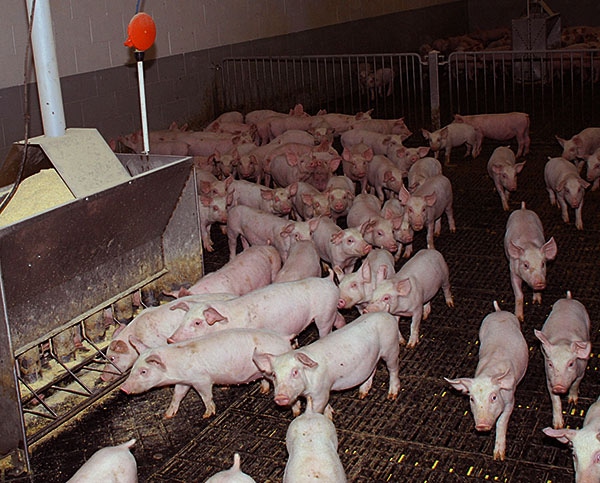December 18, 2015

The global demand for meat is expected to continue to increase rapidly as populations grow and incomes in developing countries rise. Rice is a staple food for more than half of the world’s population, and the production of rice for human consumption yields over 200 million tons of co-products per year. Those co-products can be fed to livestock and thus help meet the demand for animal protein.
“Different procedures used in rice milling may negatively affect the digestibility and availability of amino acids,” says Hans H. Stein, professor of animal sciences at the University of Illinois. Stein and his team recently published the results of an experiment to determine the digestibility of amino acids in several rice co-products fed to growing pigs.
Stein and his team tested broken rice, two sources of full fat rice bran (FFRB-1 and FFRB-2), and one source of defatted rice bran (DFRB). Rice bran is the outer layer of the rice grain, which is removed to make polished white rice. Broken rice consists of polished white rice kernels that are too short to be sold for human consumption.
The standardized ileal digestibility of crude protein was 97.2% in broken rice, 83.9% in FFRB-1, 79.8% in FFRB-2 and 78.7% in DFRB. For all amino acids, values for standardized ileal amino acid digestibility were greatest in broken rice. Digestibility values for most amino acids were the same for the two sources of full fat rice bran, but digestibility was greater in FFRB-1 for some amino acids, including lysine, methionine and histidine. Digestibility values were greater in both FFRB-1 and FFRB-2 than in DFRB for most amino acids.
“Full fat rice bran has more fat and less fiber than defatted rice bran, and both of these factors improve amino acid digestibility,” Stein says. “But digestibility is greatest in broken rice because it contains virtually no fiber.”
Digestibility not only issue
Digestibility isn’t the whole story, Stein points out. Most of the protein in rice is contained in the bran, so the concentration of amino acids in broken rice is very low.
“Defatted rice bran actually had the greatest concentration of standardized ileal digestible amino acids, and broken rice had the least,” he says. “The amount of amino acids in the rice bran products was so much greater than in broken rice that it made up for the relatively low digestibility.”
All rice co-products contain protein of high quality and a balance of indispensable amino acids that is closer to the requirements for pigs than in most other co-products from cereal grains. This favorable amino acid balance in combination with the relatively high digestibility makes rice co-products valuable sources of amino acids if included in diets fed to pigs.
The paper, “Amino acid digestibility in rice co-products fed to growing pigs,” was published in a recent edition of Animal Feed Science and Technology. It was co-authored by Gloria Casas and Juliana Almeida, both from the U of I. The full text can be found online.
You May Also Like


